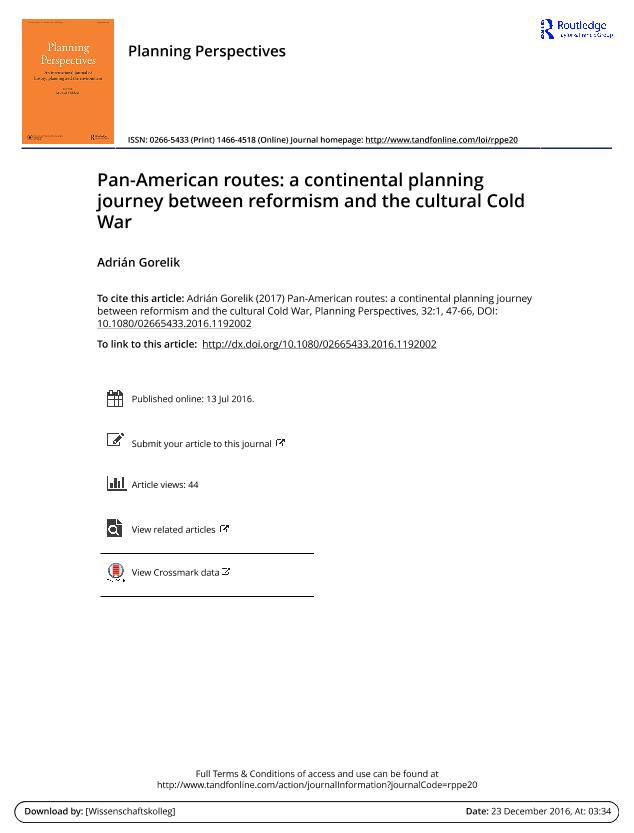Artículo
Pan-American routes: a continental planning journey between reformism and the cultural Cold War
Fecha de publicación:
01/2017
Editorial:
Taylor & Francis
Revista:
Planning Perspectives
ISSN:
0266-5433
e-ISSN:
1466-4518
Idioma:
Inglés
Tipo de recurso:
Artículo publicado
Clasificación temática:
Resumen
This article proposes a framework for the relationship between Latin American countries and the USA in the field of urban and regional culture during a particularly rich period from the mid-1930s to the mid-1970s–a period of maximum global expansion of a North American planning style as well as the emergence of a network of Latin American urban thinking in direct connection with this style and with a number of North and Pan-American institutions. This relationship is thought of as a metaphoric back-and-forth journey between the north and south–a process of movement and transmigration of ideas, people, and institutions that can be seen schematically as a cycle with two phases. The first one of expansion of new forms of Anglo-American urban thinking in the region (through the ideas of modernization and development), went from the late-1930s to the mid-1960s. The second phase, one of retraction, rejection, and pursuit of alternative paradigms in Latin American thought (replacing development with dependency), went from the mid-1960s to the mid-1970s in a process of increasing radicalization. Within this general picture, the article tries to underline the paradoxical character of the relations between the USA and Latin America, and the way in which the field of urban culture can illuminate this in new ways.
Palabras clave:
Dependency
,
Development
,
Latin America
,
Modernization
,
Planning
,
United States
Archivos asociados
Licencia
Identificadores
Colecciones
Articulos(SEDE CENTRAL)
Articulos de SEDE CENTRAL
Articulos de SEDE CENTRAL
Citación
Gorelik, Adrian Gustavo; Pan-American routes: a continental planning journey between reformism and the cultural Cold War; Taylor & Francis; Planning Perspectives; 32; 1; 1-2017; 47-66
Compartir
Altmétricas




